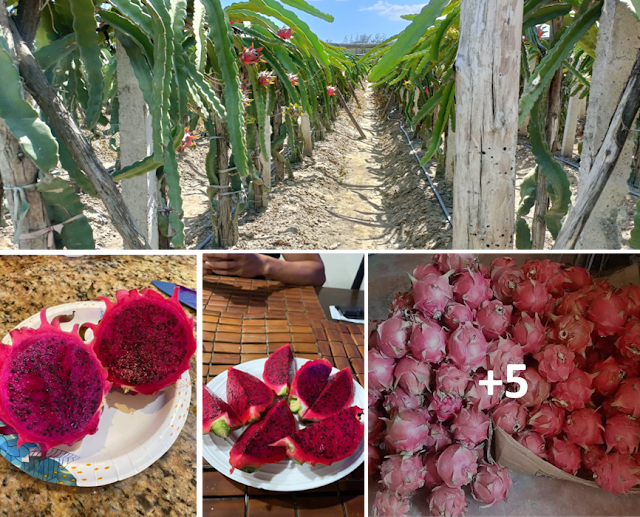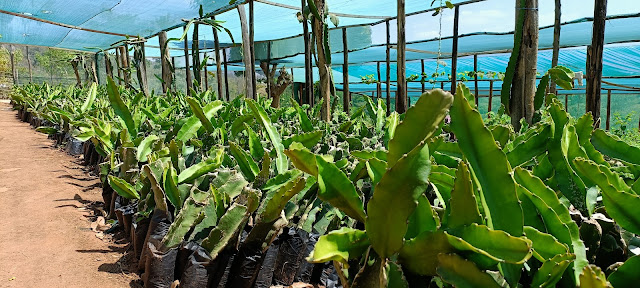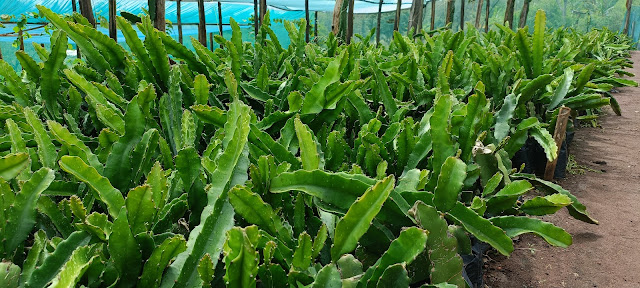Our
price for grafted macadamia seedlings has been slashed. Every start of the
rainy season in Kenya, we ensure that we have high quality grafted macadamia
seedlings for sale. We also start off by giving big discounts on prices. This
is not only on macadamia seedlings but on all the other fruit and vegetable
seedlings that we sell. So make sure that you check out our Products page and
get in touch with us on Whatsapp 0724698357 to enjoy the huge discounts.
 |
| Macadamia seedlings for sale in Kenya |
This
season, we have big, well hardened off grafted Murang’a 20 macadamia seedlings
for sale. We also have a few seedlings of the Embu 1 and Kiambu 3 varieties. We
usually have these other varieties to encourage farmers to plant more than 1
variety on their farms. This helps in improving pollination hence giving the
farmers higher yield. You can read more about this in our comprehensive article
Macadamia Nuts Farming In Kenya: How to Make It a Highly Profitable Business.
 |
| Grafted Murang'a 20 macadamia seedlings for sale |
Big Macadamia Seedlings for Sale at Richfarm Kenya
The seedlings we have are over 1 foot tall: see actual photo below.
 |
| Big macadamia seedlings for sale |
Price cut on Macadamia seedlings
The cost of 1 grafted macadamia seedling is Ksh300.
However, we are welcoming you into the season by slashing this price for you
all the way down to Ksh250. The best part of it is that you do not have to
worry about transportation. We deliver the seedlings right to your farm. This
comes with another advantage you won’t find anywhere else; the team delivering
the seedlings is specialized in planting. So you get free consultation on the
best method of planting. We love to see you smiling so we take off from you all
the hustle of establishing the farm.
How many macadamia seedlings fit in 1 acre?
The recommended spacing for planting macadamia is 7
by 7 metres. 1 acre will accommodate 80 seedlings. With our discounted price,
you will only need Ksh20,000 to fill up an entire acre. With that, you will
have made an investment of a lifetime. Every year, you will be making passive
income from that farm. When these trees mature, you will be harvesting 100kgs
from each every year. The price for macadamia nuts averages at Ksh100. So each
tree will be giving you Ksh10,000. So the one acre will give you Ksh800,000
every year with very little input. Macadamia nuts grow on trees so you do not
have to be at the farm all the time like is the case for other crops. You only
come to harvest. See why Macadamia Is the Cash Crop to Farm in Kenya in 2020 and Beyond.
How to plant our grafted Macadamia seedlings
Dig the holes with a spacing of 7×7m. The hole
should be 2 feet wide and 2 feet deep; that is a square of 2×2×2 feet (2 feet
is approximately 60cm). While digging the hole, ensure you separate the top
from the bottom soil. Mix the top soil with well decomposed farmyard manure
then put the mixture back into the hole. Do not mix the soil and manure inside
the hole since you will not get an even distribution of the manure. If some
areas have excess manure, the roots of your macadamia seedlings will be burned.
Once you have the holes ready, remove the potting
bags that came with the seedlings and plant them at the centre. Ensure that rooting
soil is not disturbed. It is better to cut out the potting bag with a sharp
razor. The rooting soil should be covered completely to ensure that the roots
will not be exposed later.
How to order for grafted Macadamia seedlings
All you need to do is call Richfarm Kenya on 0724698357. They work Monday to Saturday, 8am to 5pm. The good this is that you can engage them on Whatsapp or email on info@richfarmkenya.com even outside the working hours. To get you started, you can read the article Professional Macadamia Farming in Kenya: Full Guide or simply call and ask the questions you might have.




















